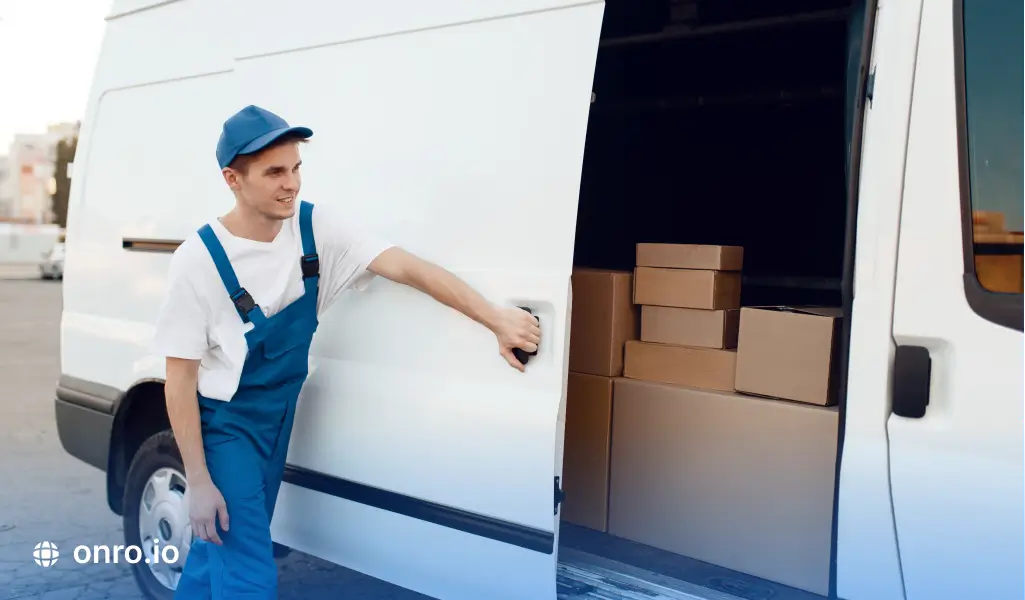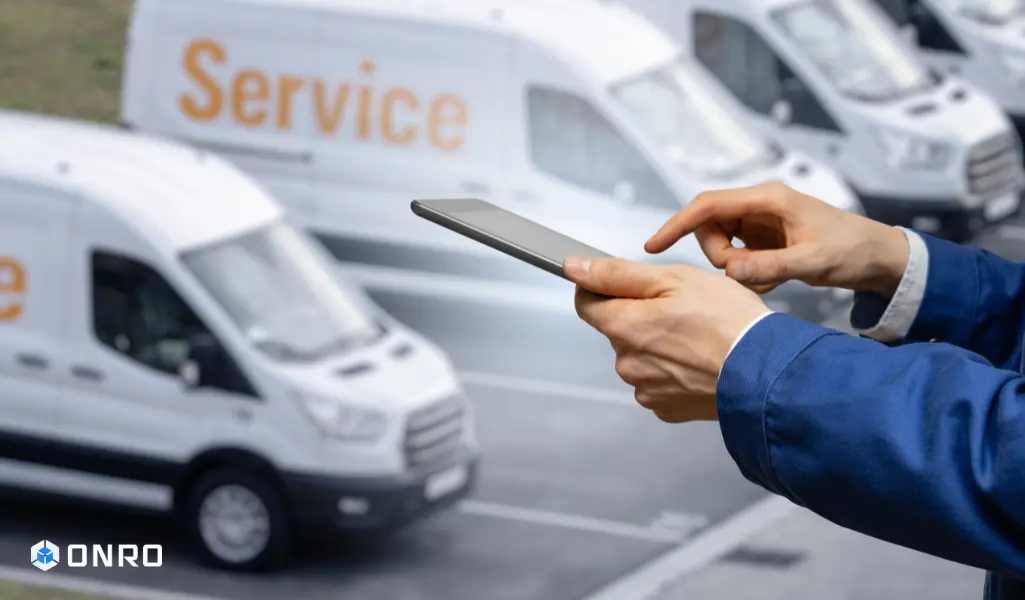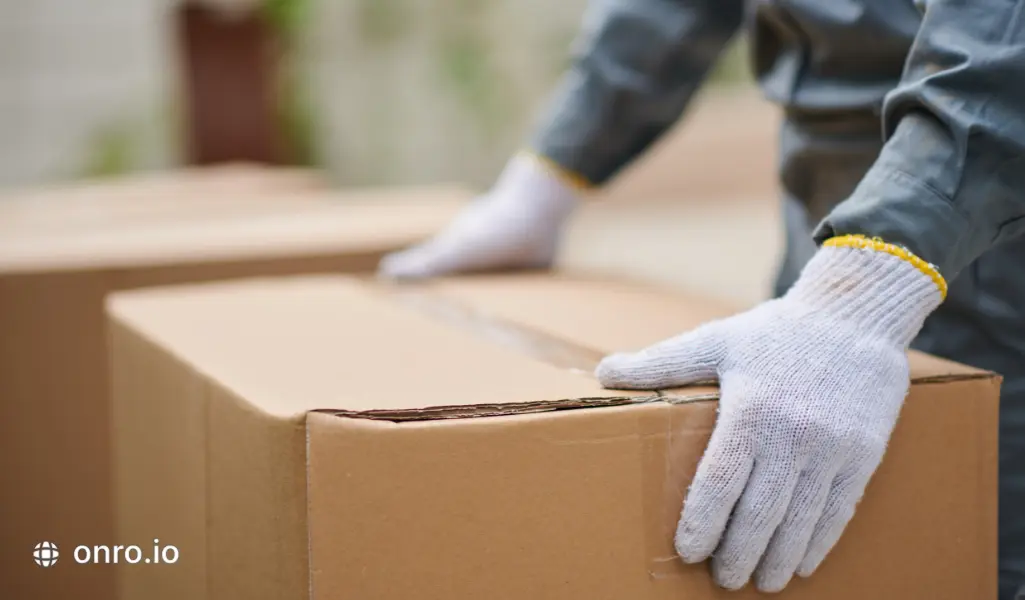“Last-mile delivery is the final shipping process, where items are shipped from a local warehouse directly to the customer’s home.”
Key Takeaways
-
Overnight shipping guarantees next-business-day delivery.
-
The final step of the distribution procedure from a hub to the end customer.
-
Applicable to an e-commerce company, food delivery, and retail logistics.
-
The most expensive segment, due to scattered end destinations and time constraints.
-
Highly affects customers’ satisfaction and impacts brand consideration.
-
Providing services like same-day, next-day, and on-demand delivery.
-
Offers real-time tracking, ETA, and POD facilities.
-
The heavy lifting of last-mile usage is alleviated by means of automation, software, and robots to cut costs and enhance efficiency.
-
In time to come, innovations like drones and autonomous vehicles will go through.
-
Customer feedback should indeed be an imperative step in improving last-mile services.
-
With white-glove service, good returns establish further customer loyalty and competitive advantage.
The last segment of logistics is Last Mile Delivery. The shipment leaves the hub to arrive at the consumer as the last delivery step. To deliver products to customers in another city, an online store first delivers the products to the hub in that city, where they are distributed to customers. Last Mile delivery is responsible for distributing the products. Suppose a restaurant sells food and delivers meals to the person who places an order. It is known as last Mile delivery. Different types of courier services are used in last mile delivery.
This article will discuss why and how to provide better service because it is the most crucial and expensive delivery process.
What Makes the Last Mile Delivery the Essential Part of Delivery?
High Growth Rate
The Last Mile has seen a rise in delivery in recent years, on account of several factors. Factors contributing to this increased rate include:
- Technology: In general, the advancement of technology, as well as the widespread availability of Internet-connected mobile phones, has made online shopping a potential option for individuals and businesses. The growth of Last Mile Delivery can be attributed to consumers who used to buy locally are now shopping online.
- E-commerce: The Last Mile Delivery industry is growing in tandem with e-commerce delivery management. Indeed, Last Mile Delivery is an integral part of logistics for e-commerce, and it isn’t easy to grow without it.
- Food Delivery: The growth of Last Mile Delivery is directly proportional to the growth of food delivery. People nowadays prefer to have food delivered directly to their homes as opposed to driving to a restaurant.
- Online Retail: Last Mile Delivery’s work includes delivering retail orders, which are increasingly purchased online. The online market share is growing every day. Retail orders are delivered as part of its delivery service.
High-priced
Over half of the delivery cost relates to the last leg of the delivery: the last mile delivery. It is because shipments must be transported to various locations during the final phase. Shipments are transported in bulk before the last mile delivery. For example, during the First Mile Delivery stage, shipments are often transported from the manufacturer to the seller, with fewer destinations than during the Last-Mile Delivery stage. Moreover, other factors such as a large number of vehicles, high fuel consumption, traffic, etc., raise the costs of Last Mile Delivery.
Create A Connection To The Customer’s Experience
The Last Mile Delivery service is an essential component of Customer Experience for a wide range of businesses. It has become the final step in the sale of several enterprises. Instead of communicating with them via courier, the stores no longer interact directly with their customers as they once did.
How Can Last Mile Delivery Provide A Better Customer Experience?
Price Decreases
As said previously, Last Mile Delivery is the most costly component of the last-mile delivery process, while Customer Experience anticipates not paying for delivery and receiving their package as soon as possible. Businesses seek to minimize delivery costs in such a situation as much as possible. One of the main problems of Last Mile Delivery that technology can help with is lowering delivery costs. Automation using software is one of the cost-cutting methods.
Boost Your Visibility
Customers and businesses are similar to seeking ways to improve their visibility these days. Businesses that can offer Full Visibility to their customers will have a higher chance of acquiring market share. The following features help businesses achieve Full Visibility, helping them to be the masters of last mile operations:
- POD: As part of the delivery process, the driver prepares a Proof Of Delivery document that verifies that the shipment has been delivered to its intended recipient. The signature and photo of the recipient are typically taken during the POD process. Businesses and customers can access this information, which makes the distribution process more transparent.
- ETA: Customer and business alike can view the estimated arrival time of a product at its destination with ETA (Estimated Time of Arrival) feature, which significantly improves Delivery Visibility and contributes to a positive customer experience. As a result, the customer can plan the rest of his day accordingly since he knows when the package will arrive and when he should receive it.
- Status: The ability to update the status of your deliveries is one aspect that contributes to Full Visibility. Customers and businesses want to know what the status of their orders is at any time.
- Tracking: A tracking service allows customers and companies to track delivery statuses and drivers on a map in real-time tracking.
Expand The Range Of Services
As no two businesses or customers are alike, a courier company’s market share grows as its services become more diverse. The following are the most common services that customers and businesses want:
- Next Day Delivery: E-commerce businesses use this delivery method to send orders the following day or a few days after ordering. Increasing customer satisfaction requires shorter delivery times, so businesses constantly strive to improve delivery times to increase customer satisfaction. Giving customers the option of choosing the day and hour of delivery is one step in that direction.
- Same-Day Delivery: Most supermarkets, florists, and shops in the same city that serve consumers provide same-day delivery for orders placed the same day. These companies make every effort to deliver orders the same day the consumer places them. It is a great idea to provide customers with the option to determine their own delivery time.
- On-Demand Delivery: It is crucial to use the On-Demand technique for this section of Last Mile Delivery since orders need to be placed quickly in some businesses, such as food delivery. The food will be cold, and the consumer will be unhappy if it arrives within 30 minutes. Better on-demand Delivery service will result in a better customer experience.
- Returns: The return rate is always a portion of returned orders, and it’s unavoidable. Businesses should accept returns at no cost to the customer to compete in the market. That increases customer satisfaction and encourages repeat purchases.
- White-Glove: White-glove delivery is a premium service where couriers go beyond simply dropping off packages — they carefully handle, assemble, install, and place items exactly where customers want them. For courier and last-mile delivery businesses, offering white-glove service can significantly boost customer experience by adding a personal, thoughtful touch that builds trust.
Customer Feedback
Customers’ feedback is one method of improving the customer experience of Last Mile Delivery. Previously, most client relationships were handled by store employees but now are mainly handled by the courier. As a result, getting client feedback is critical for businesses. A store’s delivery courier may mistreat a customer, and the customer will judge the store by that sight, and the store may lose the customer. Use this tool to identify disgruntled consumers and resolve their complaints.
Automation
Typically, duplicate procedures in a business can be automated. Process automation reduces labor costs and increases efficiency and last mile optimization by automating manual tasks. The majority of labor automation and digitization has been accomplished by software today. The same can be achieved with Last Mile Delivery software. We recommend that you check out the Onro Last Mile Delivery Software, which was created specifically for this purpose.
Innovation
It is foreseeable that technology will play a role in the future of Last Mile Delivery, as it does in various other industries and enterprises. Robots, drones, and self-driving cars are among the more foreseeable options. These machines have not been widely adopted yet, but their usage makes a lot of sense. They can operate for more extended periods than people, which makes them more reliable.
If you have a business and you are looking for last-mile delivery software, we suggest you check out our software demo. By filling out the form below, our experts will contact you.
Try Onro for Free
Get your free access to the Onro All-in-one Last Mile Delivery Software.
Originally published October 27, 2021 4:04 PM, updated Monday, 7 April 2025.



